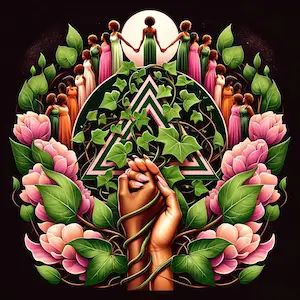In the heart of the vast, rugged landscapes of Mongolia, a unique and powerful form of chants has echoed through the ages, capturing the essence of its rich culture and history. Mongolian warrior chants, is not just an artistic expression but a profound legacy that has shaped and defined the Mongolian identity. These chants, characterized by their deep, resonant throat singing and the haunting sounds of traditional instruments, are a window into the soul of a warrior nation.
Mongolian warrior chants have a history as vast and varied as the steppes of Central Asia. Originating from the times of the great Mongolian Empire, these chants were more than mere songs; they were a symbol of strength, unity, and the indomitable spirit of the Mongolian warriors. Through their powerful rhythms and melodies, these chants told stories of battles, honored heroes, and expressed the deep spiritual beliefs of the Mongolian people.

Table of Contents
Introduction and History of Mongolian Warrior Chants
Mongolian warrior chants, transcending mere musical compositions, stand as a testament to the rich history and enduring spirit of Mongolia. These chants, which have resonated across the vast steppes for centuries, are not only a form of musical expression but also a vital part of Mongolia’s cultural and historical legacy.
The origins of these chants date back to the era of the great Mongol Empire, a time when the Mongolian warriors ruled vast expanses of Asia and Europe. These warrior chants were much more than melodies; they were a source of strength, courage, and unity for the Mongols. Embedded in these chants were tales of valor, the glory of battle, and the profound respect for nature that characterizes Mongolian spiritual beliefs.
Throughout the centuries, these warrior chants evolved, adapting to the changing times while retaining their core essence. They served multiple purposes – as rallying cries in battle, as a means to preserve history and convey it orally to succeeding generations, and as a spiritual guide that connected the warriors with their ancestors and the natural world.
In essence, Mongolian warrior chants are a powerful blend of history, music, and spirituality. They embody the resilience, tenacity, and indomitable spirit of the Mongolian people, serving as a bridge that connects the past with the present and keeps the rich Mongolian traditions alive. As we delve deeper into the various aspects of these chants, from their musical characteristics to their role in modern culture, it becomes evident that they are not just remnants of a bygone era but are very much a living, breathing part of Mongolian identity.
Mongolian Warrior Chants
The realm of Mongolian warrior chants is rich with a variety of songs, each carrying its unique history and significance. These chants, more than just musical compositions, are the narrators of Mongolia’s glorious past, echoing the tales of bravery, nature, and the spirit of the warriors. Let’s explore some of the most famous Mongolian warrior chants that have stood the test of time and continue to inspire awe and reverence.
- “Tumen Ekh” – Perhaps the most renowned of all, “Tumen Ekh” is not just a warrior chant but also a symbol of Mongolian national identity. This chant, often referred to as the national anthem of Mongolian traditional music, is a tribute to the legendary heroes of Mongolia. It is characterized by its powerful vocal performance, usually accompanied by the Morin Khuur. The chant speaks of the prowess and valor of the Mongolian warriors, serving as a reminder of the country’s rich and storied past.
- “Khar Khorum” – Named after the ancient capital of the Mongol Empire, this chant is a musical journey through Mongolia’s history. “Khar Khorum” is evocative of the grandeur and might of the Mongolian empire under the rule of Genghis Khan. The chant combines deep throat singing with the rhythmic sounds of traditional instruments, creating a soundscape that transports listeners back to the days of the great Mongol conquests.
- “Urtiin Duu” – Translating to “long song,” this style of chanting is known for its extended melodies and is often used to tell stories of famous battles, heroes, and the Mongolian landscape. The Urtiin Duu is not just a musical piece but a poetic expression, rich in metaphor and imagery, often reflecting the deep connection of the Mongolian people with their land.
- “Morin Khuur Ensemble” – While not a single chant, the ensemble pieces played on the Morin Khuur (horsehead fiddle) encapsulate the essence of the Mongolian warrior spirit. These compositions often feature a combination of several warrior chants, melded into a harmonious narrative that speaks of courage, nature, and the struggles and triumphs of life in the Mongolian steppes.
- “Deeltei Mongol” – This chant is a vibrant celebration of Mongolian culture and identity. “Deeltei Mongol,” often performed during national festivals and gatherings, is a spirited chant that praises the traditional Mongolian deel (a type of traditional clothing) and the enduring spirit of the Mongolian people.
- “Tumen Ekh” (Leader of Ten Thousand) – This iconic chant is more than just a melody; it’s a vital symbol of Mongolian cultural identity. “Tumen Ekh” extols the valor and heroism of Mongolian warriors, serving as an auditory monument to Mongolia’s storied history. The chant is characterized by its robust vocal delivery, often accompanied by the haunting strings of the Morin Khuur (horsehead fiddle), creating a powerful and evocative narrative that resonates with the listener.
- “Khar Khorum” (Black Khorum) – Named after the ancient Mongol Empire’s capital, “Khar Khorum” is a musical embodiment of Mongolia’s glorious past. It recounts the tales of the Mongol Empire, its vast conquests, and the legendary figure of Genghis Khan. The chant combines the profound depth of throat singing with the rhythmic undertones of traditional instruments, painting a vivid picture of Mongolia’s historical grandeur.
- “Urtiin Duu” (Long Song) – Not just a chant but a profound form of musical storytelling, “Urtiin Duu” is known for its extended, flowing melodies. These chants often narrate the tales of epic battles, legendary heroes, and the breathtaking Mongolian landscape. “Urtiin Duu” is a testament to the poetic nature of Mongolian culture, rich in metaphor and imagery, highlighting the deep bond between the Mongolian people and their land.
- Morin Khuur Performances – The Morin Khuur, or horsehead fiddle, is central to many Mongolian warrior chants. The instrument’s unique sound is integral to the portrayal of the Mongolian warrior spirit. Ensembles featuring the Morin Khuur often interweave various warrior chants, creating a symphonic narrative that speaks to the soul of Mongolia – its struggles, victories, and the enduring spirit of its people.
- “Deeltei Mongol” (Mongolian with Deel) – A vibrant ode to Mongolian culture, “Deeltei Mongol” is often performed at national festivals and gatherings. This chant celebrates the traditional Mongolian deel (a type of clothing) and the undying spirit of the Mongolian people. It’s a lively and proud declaration of Mongolian identity, resonating with the joy and pride of a nation steeped in rich traditions.
These famous Mongolian warrior chants are not merely songs; they are the heartbeat of a culture, echoing through time. They celebrate the enduring legacy of the Mongolian people – a legacy defined by strength, resilience, and a profound connection to their ancestral roots.
Chants in Warfare
The role of Mongolian warrior chants in the realm of warfare is a fascinating blend of psychological strategy, cultural expression, and spiritual belief. These chants, more than just a tool for entertainment or artistic expression, played a significant and multifaceted role in the battles and conquests of the Mongolian warriors.
Historically, Mongolian warrior chants were an integral part of the preparation and execution of warfare. They served not only to boost the morale of the Mongolian warriors but also to intimidate their adversaries. The deep, resonant sounds of throat singing, combined with the powerful rhythms of traditional instruments like the Morin Khuur (horsehead fiddle), created an imposing and awe-inspiring atmosphere on the battlefield. This sonic backdrop was believed to instill fear in the hearts of enemies, while simultaneously invigorating the Mongolian warriors with courage and a sense of invincibility.
These chants also played a role in unifying the troops. In the vast open plains of Mongolia, where warriors could be scattered over large areas, the chants served as a rallying cry, a means of communication that transcended language and distance. They helped to synchronize movements and strategies, ensuring a cohesive and coordinated effort in battle.
Moreover, Mongolian warrior chants carried a deep spiritual significance. They were often imbued with shamanistic elements, invoking the spirits of nature and ancestors for protection and victory. These spiritual undertones added a layer of mysticism to the warfare, making the warriors feel connected to higher powers and reinforcing their belief in the righteousness of their cause.
The psychological impact of these chants cannot be overstated. They were a tool for psychological warfare, designed to break the enemy’s spirit even before physical confrontation. The haunting melodies and the guttural, echoing vocals were meant to echo across the battlefields, a reminder of the might and ferocity of the Mongolian empire.
In conclusion, Mongolian warrior chants were much more than just songs; they were a crucial element in the art of Mongolian warfare. They encapsulated the spirit, strategy, and spiritual beliefs of the Mongolian people, playing a critical role in their military successes and leaving a lasting imprint on the history of warfare.
Chants in Warfare
In the vast, windswept plains of ancient Mongolia, warrior chants were not merely cultural expressions; they were a potent tool in the art of warfare. These chants, integral to the Mongolian warriors’ ethos, played a crucial role in both the psychological and strategic aspects of warfare, embodying the fierce spirit and tactical brilliance of the Mongolian hordes.
- Psychological Warfare: The primary role of Mongolian warrior chants in battle was psychological. The deep, resounding throat singing and the powerful rhythms of traditional instruments like the Morin Khuur (horsehead fiddle) created an intimidating soundscape on the battlefield. This formidable auditory display was designed to instill fear and uncertainty in the hearts of the enemy, often demoralizing them even before the physical combat commenced. The chants conveyed a message of invincibility and ferocity, characteristics synonymous with the Mongolian warriors.
- Morale Boosting: For the Mongolian warriors themselves, these chants were a source of inspiration and unity. In the chaos and tumult of battle, the familiar strains of their traditional chants served as a rallying point, fostering a sense of brotherhood and collective purpose. The chants reminded the warriors of their home, their heritage, and their reasons for fighting, thereby boosting their morale and determination.
- Strategic Communication: The chants also played a practical role in the mechanics of warfare. In an age where long-distance communication was challenging, the chants served as a means to coordinate movements and tactics across the wide expanses of the battlefield. The rhythm and tempo of the chants could signal different commands, aiding in the strategic deployment of troops and ensuring a unified assault.
- Spiritual Connection: Beyond the physical realm, these warrior chants held a deep spiritual significance. They were often imbued with shamanistic elements, calling upon the spirits of nature and ancestors for protection and victory. This spiritual dimension provided the warriors with a sense of divine support, bolstering their confidence and resolve.
- Cultural Identity and Tradition: The chants were a manifestation of Mongolian cultural identity and tradition. They were a reminder of the warriors’ rich cultural legacy, a legacy that they were defending. This sense of cultural pride and identity was crucial in maintaining the fighting spirit of the Mongolian warriors.
In essence, the Mongolian warrior chants were a multifaceted element of Mongolian warfare. They were a psychological weapon, a source of morale, a means of strategic communication, a spiritual connector, and a cultural emblem. These chants were not just songs; they were a key component of the Mongolian art of war, integral to the successes of one of history’s most formidable fighting forces.
FAQ
Can these warrior chants still be heard today?
Yes, Mongolian warrior chants are still performed and celebrated today. They have experienced a revival and are often featured in cultural festivals, concerts, and have influenced contemporary music genres, preserving this unique aspect of Mongolian heritage.
How do Mongolian warrior chants differ from other traditional music?
Mongolian warrior chants are distinct in their use of throat singing and specific traditional instruments. They also carry a unique historical and cultural significance, often related to themes of war, heroism, and the spiritual beliefs of the Mongolian people.
See Related Posts

Gregorian Christmas Chants

Love Spell Chants

Best Softball Chants for U12

AKA Sorority Chants

Argentina Football Chants

Short Chants and Cheers

Alabama Football Chants

Everything to Know About African Chants

